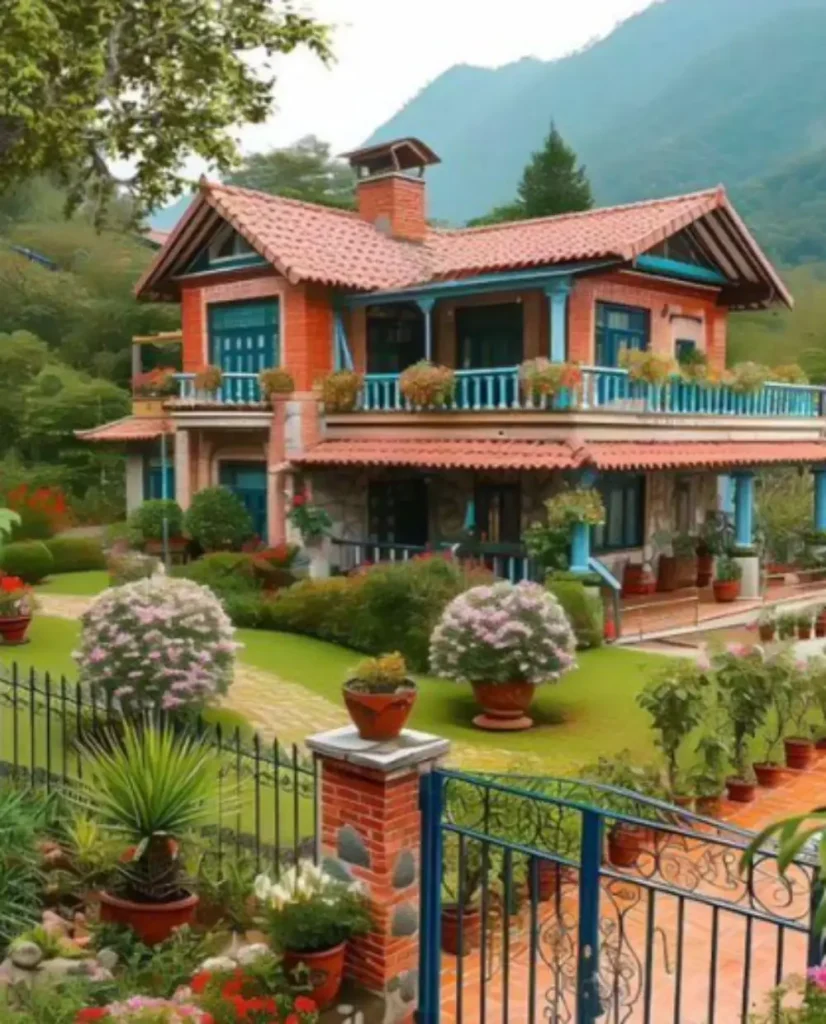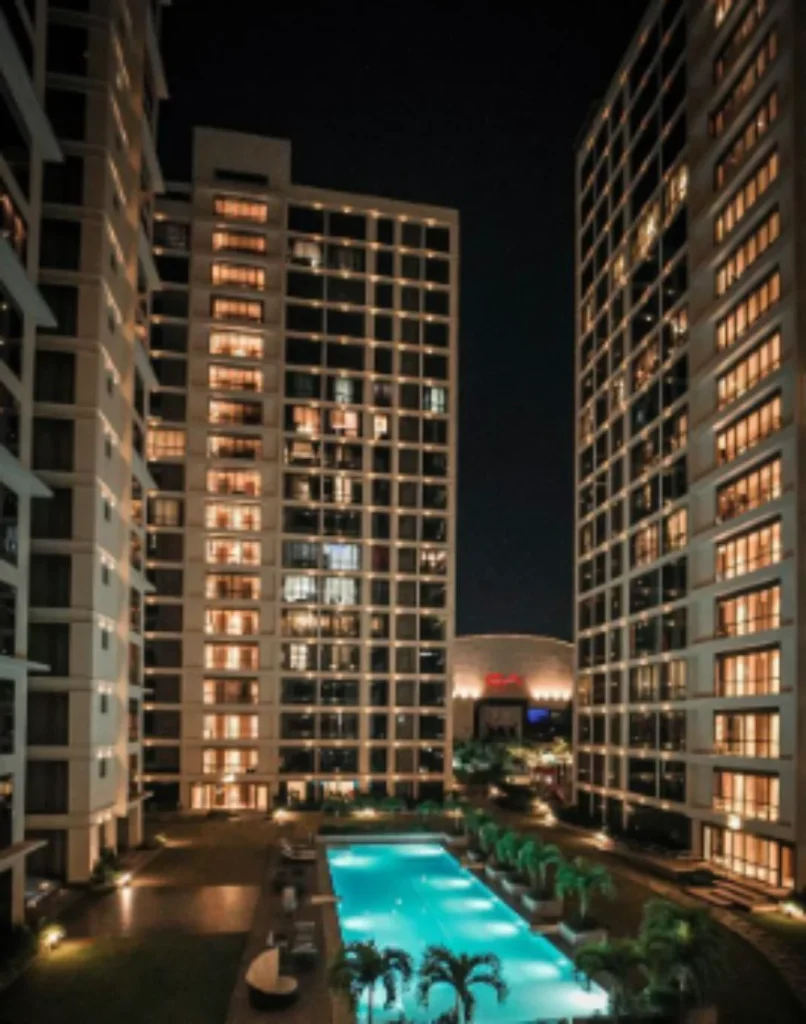India’s rich cultural heritage and geographical diversity are reflected in the wide array of housing options across the country. India’s architecture ranges from grand, palatial villas of Rajasthan to quaint, eco-friendly cottages of the Western Ghats. It’s a true feast for the senses.
Brick & Bolt is a leading home construction company. We know it’s important to help homebuyers and investors navigate India’s complex housing market. This blog covers many types of houses in India and explores their unique features, design elements, and the people they cater to.
Different Types Of Houses In India You Should Know
If you’re planning to purchase a new house or explore the construction industry for the first time, houses in India are categorised by material type, style, and density. Let’s break this down in an easy-to-understand way.
1. Based on material type:
a) Kutcha houses
Kutcha houses are a type of traditional dwelling commonly found in rural and tribal areas of India like Bihar, West Bengal, Odisha, Assam, Rajasthan, Tamil Nadu and Andhra Pradesh. These are made from locally available natural materials such as mud, thatch, bamboo, and reeds. Kutcha houses are generally temporary constructions that are not built to last and lack durability. As a result, kutcha houses are typically intended for short-term use and may require frequent repairs or rebuilding.

Some modern kutcha houses incorporate improvements by stabilising mud with cement or using treated bamboo to enhance durability. Kutcha houses generally are in need of more modern amenities. But, they are rooted in India’s culture and often showcase intricate craft and design.
b) Pucca houses
Pukka houses are permanent structures made from durable materials such as bricks, cement, steel, and concrete. These houses are designed to withstand various weather conditions and provide long-term stability and comfort.

These are typically found in metropolitan cities like Chennai, Bangalore, Kolkata, Mumbai, and Delhi and Tier-2 cities like Pune, Hyderabad and Jaipur. It is also found in coastal cities and towns like Goa, Kochi, and Visakhapatnam to withstand the coastal climate.
2. Based on style:
When it comes to style, from traditional courtyard houses in Kerala to ultra-modern smart homes, each style offers unique benefits to different climates, lifestyles, and preferences. Here’s an overview of types of houses based on their style:
Traditional Houses:
From the cool, stone-built houses in the Himalayan regions to the airy, thatched-roof structures in tropical areas, India showcases a diverse range of traditional architectural styles, each uniquely adapted to the country’s varying climatic conditions.
1) Courtyard houses in Kerala
Courtyard houses are the most common feature of Kerala’s traditional architecture. These houses are designed with a central open courtyard, called a “nadumuttam,” which serves as the focal point for the entire structure.

Such houses are known for their natural ventilation and lighting, which reduce artificial systems, making them energy-efficient and eco-friendly.
2) Havelis in Rajasthan
The Havelis were not only living spaces but were commercial and community spaces. Today, many of these old buildings have been renovated.
These are traditional mansions found in India and are known for their grandeur and intricate architectural details. These sprawling residences typically feature large courtyards, elaborate balconies, and ornate carvings on doors and windows.

Havelis often have multiple stories with expansive rooms, arched doorways, and beautifully decorated facades. The interiors are adorned with frescoes, mirror work, and vibrant murals.
It provides a natural cooling in the hot Indian climate, making them both functional and aesthetically pleasing.
Some examples of famous Havelis are:
- Patwon Ki Haveli in Jaisalmer is known for its intricate latticework and extensive frescoes.
- Nathmal Ki Haveli in Jaisalmer features unique architecture with twin facades.
- Salim Singh Ki Haveli in Jaisalmer is notable for its distinctive arched roof.
3) Kashmiri homes of wood/ Pahari houses
Kashmiri homes or Pahari houses, are notable for their unique wooden architecture, designed to withstand the harsh climatic conditions of the region.
These homes are primarily made from deodar or pine wood, known for its thermal insulation properties.

Wood can absorb seismic shocks better than rigid materials, making it suitable for the earthquake-prone region.
Coastal homes in Goa
Goa, known for its scenic beaches and vibrant culture, has homes designed to make the most of the coastal environment and often incorporate elements that reflect Goan architectural heritage.
Coastal homes in Goa blend traditional Goan and Portuguese architectural styles, reflecting the region’s rich cultural heritage. These homes are typically designed with sloping terracotta-tiled roofs, which are steeply angled to efficiently handle the heavy monsoon rains.
The influence of Portuguese architecture often adorned with decorative wooden frames and shutters can be observed. The exteriors of these homes are frequently painted in vibrant colours like yellow, blue, and red, adding to the charm of the coastal landscape.

Inside, large central courtyards, known as ‘Raj Angans,’ serve as communal spaces that provide natural light and ventilation. High ceilings and thick walls, often constructed from laterite stone, help keep the interiors cool.
Ornate iron railings on balconies and terraces with stunning sea views further enhance the aesthetic and functional appeal of these coastal homes, making them well-suited to Goa’s tropical environment.
Modern Houses:
Modern homes often feature verandas, open floor plans, high ceilings, and large windows to maximise natural ventilation and light.
Materials like local stone, wood, and thatch blend contemporary design with traditional aesthetics. New materials like steel, concrete and glass are utilised to incorporate a clean, simple and modern aesthetic.

Ultra-modern/ Emerging trends
Most of the modern houses are evolving with new technologies that make life easier for the users. Houses equipped with automated systems for lighting, security, climate control, and more are featured as ultra-modern homes.
In general, household appliances utilise IoT (Internet of Things) for enhanced convenience and efficiency. This favours energy efficiency, enhanced security and remote control via smartphones.
Co-living/ shared homes

This type of house is designed to accommodate multiple residents in shared living spaces where it is cost-effective, favours social interaction, and provides shared amenities.
Micro and compact homes
Compact houses are a cost-effective method of tackling tight urban plots of modern times.
These incorporate multi-use zones to enhance functionality. Built-in furniture is used for multiple purposes like a bed that transforms into a desk. Even for storage, nooks, crannies and adjustable shelves are utilised to enhance space utilisation.
3. Based on Density
Density refers to the number of people living in a single building. Cost, privacy requirements and affordability are major factors that enable people to opt between low density, medium density and high density homes.
Villas/ bungalows/ independent homes
Homeowners have complete flexibility to work with architects to create bespoke designs that satisfy their lifestyle needs. Due to their standalone nature, these types of houses offer a high level of privacy and thus have a high potential for customization both in design and construction.
This type of designs are ideal for people who seek a serene and private living environment.

While the initial and ongoing costs may be higher, the benefits of living in such a space often outweigh the disadvantages, particularly for those who value privacy and have the resources to maintain their property independently.
Low-rise apartments
Medium-density housing options are affordable solutions that balance the privacy of standalone homes with the community feel of high-rise apartments. It is a popular choice for families, young professionals, and retirees for its architectural design.
Energy-efficient materials, HVAC systems, and appliances are used for lighting. Considering low utility costs due to shared infrastructure, these houses are more affordable than independent villas.

It is ideal for young professionals and students because of its affordability, access to urban amenities, public transportation, and proximity to workplaces, restaurants, and entertainment venues.
High-rise apartments
High-rise apartments come under high-density housing options, which are prevalent in urban areas where land is scarce and expensive. These types of structures maximise the use of vertical space to accommodate a large number of residents, offering a variety of amenities and conveniences.
They are a popular choice for city dwellers, including professionals, families, and retirees.
To ensure environmental sustainability, the owner should aim for Green building certifications like LEED (Leadership in Energy and Environmental Design).In addition, sustainability practices, such as green roofs, solar panels, and advanced energy management systems, can be included.

Despite some drawbacks related to privacy and space, the advantages of cost efficiency, location, and advanced amenities make high-rise living an attractive option for many.
Conclusion:
As a home construction company, we are proud of our ability to turn Indian housing’s unique character and traditions into modern, useful, and sustainable living spaces. We stay tuned to the changing trends and preferences in the Indian real estate market. We strive to make great homes that meet our clients’ needs and honour India’s diverse architecture.
Contact Brick & Bolt to build your dream home.

